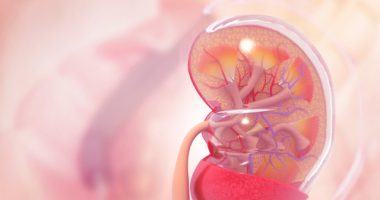Kidney Transplant Generally Safe in Children With AAV, Study Suggests

Outcomes of kidney transplants for children with kidney failure related to ANCA-associated vasculitis (AAV) are comparable to outcomes of transplants for children with other causes of kidney disease, highlighting that the procedure is generally safe and effective for children with AAV.
That’s according to the study “Practice patterns and outcomes for pediatric ANCA vasculitis transplant recipients in a national cohort,” published in Pediatric Nephrology.
AAV is an autoimmune disease characterized by inflammation in the body’s blood vessels. The kidneys, whose job is to filter blood to remove toxins and retain nutrients, are often the main site of AAV-caused damage. This can result in kidney failure — when they kidneys cannot function properly — which may necessitate a kidney transplant.
AAV in children is extremely rare, estimated to affect fewer than one out of every 50,000 children. Little is known about treatment outcomes for children with AAV who require a kidney transplant.
To gain insight, a team of scientists at Westchester Medical Center in New York conducted an analysis of data from a U.S. transplant database. The scientists identified 26,431 patients ages 1 to 22 who had undergone a transplant between 1991 and 2017. Of them, 337 (1.3%) had ANCA vasculitis.
“Our study aim was to examine differences in donor and recipient characteristics, immunosuppression, along with long-term graft outcomes between ANCA and non-ANCA vasculitis recipients,” the researchers wrote.
“This is the first and largest study to evaluate changes in transplant outcomes in the pediatric population with the rare disease of ANCA-vasculitis in the USA,” they added.
The AAV and non-AAV groups generally were similar in their demographics and clinical factors, though some significant differences were noted. There were fewer males in the AAV group (41% vs. 57.8%), and the mean age at listing for transplant was older for AAV patients (16.5 vs. 14.9). A greater proportion of the AAV group required dialysis before the transplant (89% vs. 75%).
Significantly more AAV patients received the donated kidney from a living donor (38.9% vs. 30.6%).
Immune-suppressing medications, given to prevent transplant rejection, were generally similar between the two groups, though there were differences in certain cases — for example, antithymocyte globulin was more commonly used as induction treatment for AAV than non-AAV.
Significantly fewer patients in the AAV group than the non-AAV group were treated for transplant rejection (3.9% vs. 13%).
Before kidney transplant, estimated glomerular filtration rate (eGFR) – a measure of kidney function – was significantly lower in the AAV group (9 vs. 10.1 milliliters/minute/1.73 m2, where the latter figure is a result expressed relative to body surface area).
At one year after transplant, however, the average eGFR was significantly higher in the AAV group (65 vs. 62.5 ml/min/1.73 m2). Five years post-transplant, eGFR tended to be higher in the AAV group, though the difference was not statistically significant.
Rates of graft survival — that is, with the transplanted kidney living and functioning correctly — were also significantly higher in the AAV group compared with the non-AAV group (73% vs. 61.2%). Just two AAV patients (0.6%) experienced graft failure because of a recurrence of AAV. Significantly fewer patients in the AAV group required another transplant (6.8% vs. 11.3%).
Patient survival was also greater in the AAV group (92.3% vs. 85.1%).
“Our pediatric study demonstrate that the risk of vasculitis relapse is low and kidney transplant is a safe treatment option,” the researchers concluded.






